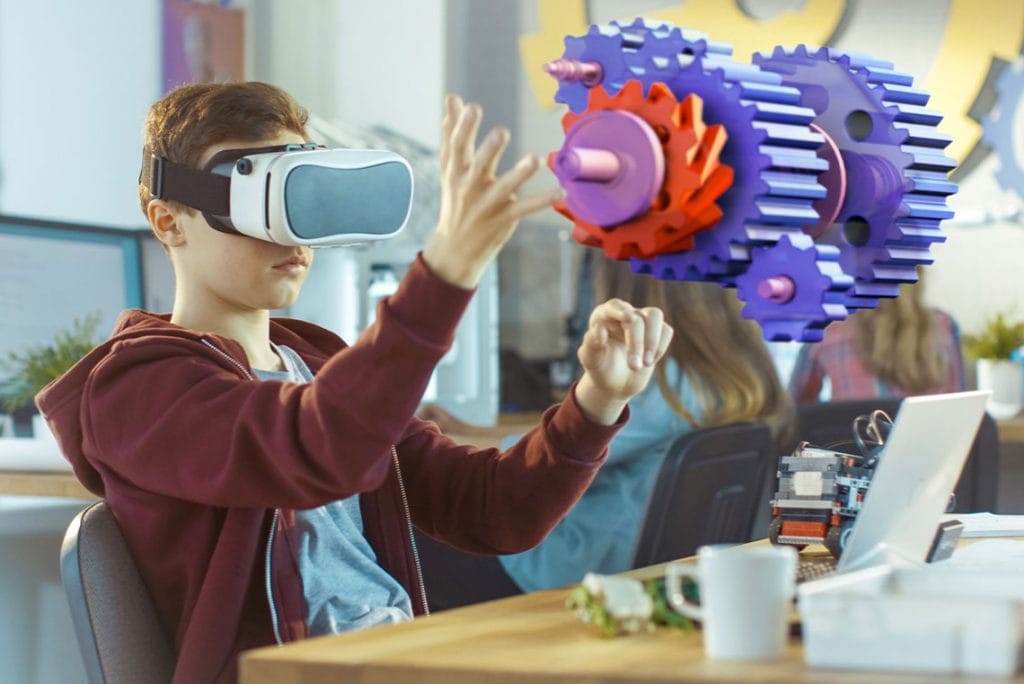If you’ve made an online purchase, bought a cup of coffee or had food delivered to your house with an app, commanded Alexa or Google Home to play a song or shut the lights, load up your Netflix for the weekend, or any other myriad activities that require you to interact with technology, then you know: technology has infiltrated our lives.
What’s behind all this tech? People. Programmers. Developers. Coders. UX Designers. App developers. Designers.
These are the people with the skills and abilities that bring the everyday tech you use into your homes and offices.
The future of work depends on many of the same skills we’ve lauded for centuries: reading, writing, thinking, and problem-solving, but there’s a new skill-set we need to acknowledge: coding. It’s no longer optional for today’s students. To succeed, they need to have at least a working knowledge of it.
Apple CEO Tim Cook says it’s more important than learning English for non-native speakers. In a 2017 article in QZ, he shared his thoughts with French President Emmanuel Macron:
“If I were a French student and I were 10 years old, I think it would be more important to learn coding than English. I’m not telling people not to learn English-but this is a language that you can [use to] express yourself to 7 billion people in the world. I think coding should be required in every public school in the world.”
While it’s unlikely that every student will learn to code, every student will have some familiarity with it. What’s truly important though? In our technology-saturated world, it’s critical not only to understand the people and technology behind the interfaces that we use every day, but it’s also imperative that we can use the information and technology we have to solve real-world problems.
The tech industry will need workers who can speak the tech language-and use it for good.
Industry needs tech workers
Korn Ferry, the global management consulting firm, recently published its Future of Work report, which explained that by 2030, we could face a global talent shortage of 85.2 million people.
Among the sectors most hardest hit? Tech. Korn Ferry explains that the digital skills gap currently affects over half the world’s companies and that the gap will continue to widen. They predict that my 2020, technology, media, and telecommunications (TMT) will need 1.1 million workers. By 2030, Korn Ferry asserts that the deficit could approach 4.3 million people or nearly 59 times Alphabet’s (Google’s) workforce.
Fiscally, this equates to about $449.7 billion in unmade revenue. That’s a lot of money. And the need for a lot of people.
As technology continues to grow, and human dependence on it becomes more enmeshed with our daily lives, so does the need for the people behind the technology.
The demand for qualified coders, programmers, designers, software engineers, and computer scientists who not only have the technical skills but also the ability to think critically will only continue to grow. And the job market will be ripe for them.
The case for coding
There are millions of computer science jobs available in the world, with millions more coming. Besides job security, are there other reasons to learn how to code?
There are some, like Apple’s CEO Tim Cook, who argues that it’s as important, if not more important, than learning a second language.
In 2016, Fast Company writer Jonathan Stern argued that coding is more than just job security. In an interview with Zach Sims, founder of ever popular Code Academy, Sims suggests it’s the fourth “R” of learning. He said, “Classically there are the the Rs of literacy: reading, writing, and arithmetic. We think that algorithm should be the fourth R. It is a foundational set of skills and framework for people to have in the 21st century.”
He further explained that it’s more than just jobs. It’s thinking. In the Fast Company article, Sims said, “You find plenty of bugs in code. How do you go through a systematic process of finding and eliminating error? In coding, you learn that it’s okay how to make mistakes, as long as you know how to fix them.”
In terms of 4 C’s of 21st century learning-critical thinking, communication, collaboration, and creativity-coding fits right in. Fixing mistakes requires critical thinking and creativity. If you’re working with a group of people to fix a lot of mistakes, it likely requires communication and collaboration, too.
How do we encourage kids to learn to code? By giving them plenty of opportunities to do it at their level.
Opportunities to learn and explore tech
From toys to summer camps, after-school programs to free apps, there are plenty of opportunities to learn to code. Skillcrush offers 64 ways to learn to code for free including Sims’s Code Academy in addition to courses and MOOCs on Coursera and edX. For the younger set, check out SteamPoweredFamily‘s best coding toys for kids, including Fischer Price’s pre-school code-a-pillar, Lego Education‘s WeDo and Mindstorms kits, and the robot, Lego Boost. There are also ozobots, little bits, and everything in between.
Don’t have thousands of dollars in discretionary income for coding education at home? Check out free opportunities at your public library and local community centers.
There are also countless apps for kids many of them free. Scratch, Jr., MIT’s free version of its coding education app for 5-7 year olds and Scratch for ages 7-adult work wonders!
Tech needs hit close to home
The need for qualified tech workers hits close to home here in New Hampshire.
In 2017, NHPR reported a two percent annual growth rate in the tech sector, with the addition of 864 tech jobs in 2016. NHPR said that Matt Cookson, executive director of the New Hampshire High Tech Council said, “Two-percent growth is better than one-percent, which is what it was the year before. But we could grow more if we could find more tech talent.”
In 2018, the New Hampshire Business Review (NHBR) reported the state’s jump on the Milken Institute’s State Technology and Science Index, from 11th to 9th in high tech industries. What does that mean? New Hampshire is in the top ten list of states with some of the most opportunity-and most competition-when it comes to high-tech jobs.
How VLACS can help
VLACS continues to be on the cutting edge of the need for technology education not just for the sake of New Hampshire’s workforce, but for the sake of equipping students with the life skills they’ll need for success. VLACS offers courses and credit-bearing projects in creative coding, cybersecurity, game design, social media, web design, foundations of programming, and a middle school introductory course to app development.
Advanced students can take creative coding up a notch with levels two and three, and AP computer science.
For students interested in other coding applications, there’s animation, game design, web design, 3D modeling, First programming, First engineering, Team robotics, keyboarding, and internet safety.
With the demanding need for coding education, VLACS also offers students the opportunity to connect with tech professionals through job shadows and credit-bearing experiences.
Ready to learn more? What are you waiting for? Check out VLACS’s learning catalog and find something that works for you!



